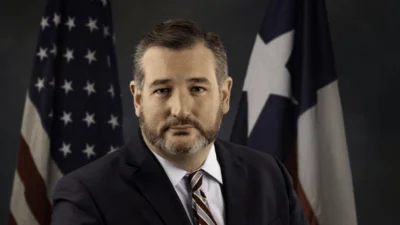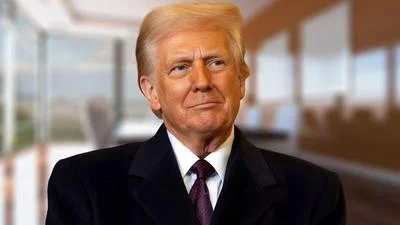The Congressional Record is a unique source of public documentation. It started in 1873, documenting nearly all the major and minor policies being discussed and debated.
“NATIONAL EMERGENCY MEDICAL SERVICES COMMEMORATIVE WORK ACT” mentioning the U.S. Dept of Labor was published in the Senate section on pages S3264-S3265 on June 6, 2018.
The Department provides billions in unemployment insurance, which peaked around 2011 though spending had declined before the pandemic. Downsizing the Federal Government, a project aimed at lowering taxes and boosting federal efficiency, claimed the Department funds "ineffective and duplicative services" and overregulates the workplace.
The publication is reproduced in full below:
NATIONAL EMERGENCY MEDICAL SERVICES COMMEMORATIVE WORK ACT
A bill (S. 1692) to authorize the National Emergency Medical Services Memorial Foundation to establish a commemorative work in the District of Columbia and its environs, and for other purposes.
Mr. McCONNELL. I ask unanimous consent that the bills, en bloc, be considered read a third time.
The PRESIDING OFFICER. Is there objection?
Without objection, it is so ordered.
The bill (H.R. 1900) was ordered to a third reading and was read the third time.
The bill (S. 2857) was ordered to be engrossed for a third reading and was read the third time.
The bill (H.R. 1397) was ordered to a third reading and was read the third time.
The bill (S. 1692) was ordered to be engrossed for a third reading and was read the third time.
Mr. McCONNELL. I know of no further debate on the bills en bloc.
The PRESIDING OFFICER. Is there further debate?
Hearing none, the bills having been read the third time, the question is, Shall the bills pass en bloc?
The bill (H.R. 1900) was passed.
The bill (S. 2857) was passed, as follows:
S. 2857
Be it enacted by the Senate and House of Representatives of the United States of America in Congress assembled,
SECTION 1. SHORT TITLE.
This Act may be cited as the ``National Nordic Museum Act''.
SEC. 2. FINDINGS.
Congress finds that--
(1) the Nordic Museum in Seattle, Washington, is the only museum in the United States dedicated to Nordic history, culture, and art;
(2) Nordic people have long contributed to the rich cultural heritage of the United States;
(3) the Nordic Museum serves as a unique and valuable resource locally and nationally for expanding knowledge relating to--
(A) Nordic heritage; and
(B) the impact Nordic heritage has had throughout the United States;
(4) a new state-of-the-art facility was opened to house the Nordic Museum on May 5, 2018, making Nordic history, culture, and art even more engaging and accessible to the public;
(5) to provide funds and exhibits for the new Nordic Museum, numerous public and private entities and many private individuals partnered together, including--
(A) the State of Washington;
(B) King County, Washington;
(C) the Nordic Council, which is composed of representatives from the national parliaments of Nordic countries; and
(D) the national museums of Denmark, Finland, Iceland, Norway, and Sweden;
(6) the Nordic Museum is--
(A) a significant resource for preserving and celebrating the history, culture, and art of Nordic immigrants in the United States; and
(B) the only museum in the United States that exists for the exclusive purpose of preserving, interpreting, and providing education about Nordic culture and heritage; and
(7) the Nordic Museum promotes valuable international relations between the United States and the Nordic countries of Denmark, Finland, Iceland, Norway, and Sweden.
SEC. 3. DESIGNATION OF NATIONAL NORDIC MUSEUM.
(a) Designation.--The Nordic Museum located at 2655 N.W. Market Street, Seattle, Washington, is designated as the
``National Nordic Museum''.
(b) Effect of Designation.--
(1) In general.--The museum designated by subsection (a) is not a unit of the National Park System.
(2) Use of federal funds.--The designation of the museum by subsection (a) shall not require Federal funds to be expended for any purpose related to the museum.
The bill (H.R. 1397) was passed.
The bill (S. 1692) was passed, as follows:
S. 1692
Be it enacted by the Senate and House of Representatives of the United States of America in Congress assembled,
SECTION 1. SHORT TITLE.
This Act may be cited as the ``National Emergency Medical Services Commemorative Work Act''.
SEC. 2. FINDINGS.
Congress finds that--
(1) each year, throughout the United States, the 850,000 first responders of Emergency Medical Services answer more than 30,000,000 calls to serve 22,000,000 patients in need of life-saving care and comfort at a moment of notice and without reservation;
(2) with little regard for their own safety and in the face of all hazards, the first responders of Emergency Medical Services respond across the spectrum of incidents from a medical emergency of a single person to naturally occurring or manmade disasters, including terrorist attacks that threaten the entire United States;
(3) the commitment of the first responders of Emergency Medical Services to others, at a moment of notice and despite risk, exemplifies the finest traditions of the spirit of the people of the United States;
(4) as an element of the homeland defense strategy of the United States, Emergency Medical Services stands on the
``Nation's first line of defense in the prevention and mitigation of risk from terrorist attacks, man-made incidents, and natural disasters'';
(5) the first responders of Emergency Medical Services, along with the members of Law Enforcement and Fire Services, serving in both the public and private sectors as career and volunteer emergency medical service providers--
(A) are a critical element of the homeland and national security efforts of the United States; and
(B) provide for the domestic tranquility of the citizens of the United States;
(6) all too often the risks associated with the critical role of Emergency Medical Services results in an unacceptable rate of injury and fatality to first responders;
(7) statistics compiled by the Department of Labor and the National Highway Safety Administration indicate that Emergency Medical Services providers--
(A) die in the line of duty at a rate more than twice the national average for all occupational fatalities; and
(B) experience an injury rate of virtually 100 percent during the careers of the providers;
(8) the United States has historically and continually relied on the selfless and ultimate sacrifices made by citizens in service to the United States and the families and loved ones of citizens in service to the United States, in order to maintain the domestic tranquility, safety, and security of the United States;
(9) the first responders of Emergency Medical Services continue to serve in this finest tradition, in the face of unacceptable sacrifice, risk, and danger in service to the United States and the citizens of the United States;
(10) the scope of responsibility assumed by the first responders of Emergency Medical Services is broad and unique; and
(11) the sacrifice and commitment of the first responders of Emergency Medical Services in service to the United States is deserving of a commemorative work that recognizes the sacrifice and commitment of the first responders.
SEC. 3. AUTHORIZATION TO ESTABLISH COMMEMORATIVE WORK BY THE
NATIONAL EMERGENCY MEDICAL SERVICES MEMORIAL
FOUNDATION.
(a) In General.--The National Emergency Medical Services Memorial Foundation (referred to in this section as the
``Foundation'') may establish a commemorative work on Federal land in the District of Columbia and its environs to commemorate the commitment and service represented by Emergency Medical Services.
(b) Compliance With Standards for Commemorative Works.--The establishment of the commemorative work under this section shall be in accordance with chapter 89 of title 40, United States Code (commonly known as the ``Commemorative Works Act'').
(c) Payment of Expenses.--
(1) Responsibility of national emergency medical services memorial foundation.--The Foundation shall be solely responsible for acceptance of contributions for, and payment of the expenses of, the establishment of the commemorative work under this section.
(2) Use of federal funds prohibited.--Federal funds may not be used to pay any expense of the establishment of the commemorative work under this section.
(d) Deposit of Excess Funds.--
(1) In general.--If on payment of all expenses for the establishment of the commemorative work (including the maintenance and preservation amount required by section 8906(b)(1) of title 40, United States Code), there remains a balance of funds received for the establishment of the commemorative work under this section, the Foundation shall transmit the amount of the balance to the Secretary of the Interior for deposit in the account provided for in section 8906(b)(3) of title 40, United States Code.
(2) On expiration of authority.--If on expiration of the authority for the commemorative work under section 8903(e) of title 40, United States Code, there remains a balance of funds received for the establishment of the commemorative work under this section, the Foundation shall transmit the amount of the balance to a separate account with the National Park Foundation for memorials, to be available to the Secretary of the Interior or Administrator of General Services, as appropriate, in accordance with the process provided in section 8906(b)(4) of title 40, United States Code, for accounts established under paragraph (2) or (3) of section 8906(b) of title 40, United States Code.
Mr. McCONNELL. I ask unanimous consent that the motions to reconsider be considered made and laid upon the table, all en bloc.
The PRESIDING OFFICER. Is there objection?
Without objection, it is so ordered.
____________________








